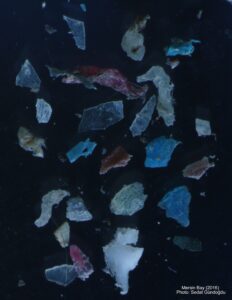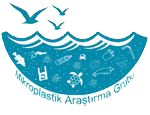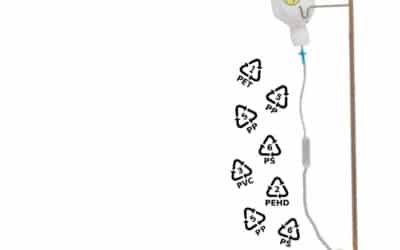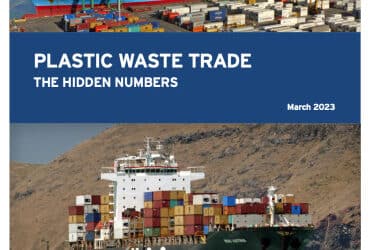What are mIcroplastIcs?
 The term microplastic was first used in a report published by the US Air Force Materials Laboratory in 1968. It referred to particles that were formed as a result of deformation in plastic materials subjected to high levels of stress.Four years later, it was discovered that micro-sized plastic particles were found in the Sargasso Sea’s surface water, marking the first time the world became aware of such particles in the aquatic environment. In 2004, scientists defined small plastic particles as microplastics. Later, this definition was expanded to include plastics smaller than 5 mm by the Steering Committee of the National Oceanic and Atmospheric Administration (NOAA) Marine Debris Programme. Following this, plastics were categorised by size: Macroplastic ≥ 25 mm, Mesoplastic 25 – 5 mm, Microplastic ≤5 – 1 mm, Mini-microplastic <1mm – 1µm and Nanoplastic < 1µm. Whilst the primary origin of microplastics in aquatic environments is the degradation of larger plastic items, microplastics are also produced industrially for a variety of purposes. The ones originating from the deterioration of larger components are referred to as secondary microplastics, whereas those with an industrial origin are known as primary microplastics.
The term microplastic was first used in a report published by the US Air Force Materials Laboratory in 1968. It referred to particles that were formed as a result of deformation in plastic materials subjected to high levels of stress.Four years later, it was discovered that micro-sized plastic particles were found in the Sargasso Sea’s surface water, marking the first time the world became aware of such particles in the aquatic environment. In 2004, scientists defined small plastic particles as microplastics. Later, this definition was expanded to include plastics smaller than 5 mm by the Steering Committee of the National Oceanic and Atmospheric Administration (NOAA) Marine Debris Programme. Following this, plastics were categorised by size: Macroplastic ≥ 25 mm, Mesoplastic 25 – 5 mm, Microplastic ≤5 – 1 mm, Mini-microplastic <1mm – 1µm and Nanoplastic < 1µm. Whilst the primary origin of microplastics in aquatic environments is the degradation of larger plastic items, microplastics are also produced industrially for a variety of purposes. The ones originating from the deterioration of larger components are referred to as secondary microplastics, whereas those with an industrial origin are known as primary microplastics.
Primary microplastics typically take the form of small, circular microbeads intentionally manufactured by the plastics industry for usage in cosmetics, personal care items, dermal exfoliants, cleaning agents and sandblasting machines. Pellets are additional kinds of microplastics, being industrial raw materials produced by the plastics industry with the aim of being melted and moulded to make larger plastic materials. Synthetic fibres constitute a further type of microplastics, and are employed in the creation of clothing. Microplastics are transported to both freshwater and marine environments via wind or through urban runoff. Widespread usage of microplastics over decades has resulted in their presence in every layer of the sea.
Irregular pieces of plastic, known as secondary microplastics, are formed due to degradation of larger plastic items such as bags, containers, bottles and, in particular, ropes and nets. Over time, large plastic litter fragments break down into smaller pieces due to exposure to sunlight and mechanical forces, such as tidal waves. An experimental investigation revealed that the cover of a polystyrene coffee cup measuring 1 cm2 can generate 126000000 nanoparticles per millilitre, averaging 224 nm in length, after 56 days of exposure to 320-400 nm ultraviolet light at 30 degrees Celsius. These tiny plastic particles can readily spread throughout the water column and may be consumed by numerous marine organisms as food.
The most comprehensive reference book on the plastic waste trade published
Title: Plastic Waste Trade A New Colonialist Means of Pollution Transfer Editor: Sedat Gündoğdu...
Scientists from our group warn that plastics used for medical treatment cause a neglected direct human microplastic exposure
A new study has revealed the presence of microplastics (MPs) in hypertonic fluid solutions, a type...
New Study: Plastic Waste Trade: The Hidden Numbers
Plastics are a mixture of fossil fuels and chemicals, and many chemicals in plastics are known to...
Contact Us



